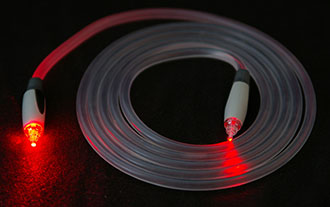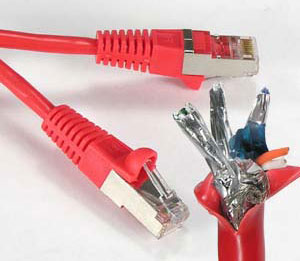Choosing Between Wired or Wireless
 Any readers who’ve never been asked by a client, “Will it be wireless?” — raise your hand.
Any readers who’ve never been asked by a client, “Will it be wireless?” — raise your hand.
That’s what I thought.
It’s true that today we have a huge number of wireless options for AV and control. There are solid working options today that were glitch and disappointing five years ago, and only wishful thinking ten years ago. But as the saying goes: Just because you can, doesn’t mean you should.
Should AV Pros always go with the wireless option first in their projects? I say no. While wireless is a big help to the custom channel, hard-wired installations are still necessary. For that matter wired technology continues to evolve almost as rapidly as wireless.
There’s more to completing a successful project, whether wired or wireless, than just the technology. It’s not just the tools; it’s how you use them. Installing a physical network comes down to being faster with more bandwidth, more inexpensively and with greater reliability for all systems. Wireless is at the mercy of external factors when it comes to download speeds. The need for a high bandwidth, structured wiring backbone becoming even more important as networked entertainment grows. Waiting while content buffers on a 100-inch screen kind of defeats the purpose.
Despite advances in wireless, wired is still fastest and most reliable when transmitting audio and video, but as far as control and communication, selecting which way to go has more to do with the application and what the client wants to do.
Today it’s common for control systems have a combination of wired and wireless within the same system. And vendors like Crestron use several different wireless platforms within its family of automation products, including long-range, two-way RF, mesh network technology and enhanced Wi-Fi. Each gives you a different data rate, range and functionality depending on the environment and client expectations
When it comes to wired installations, best practices are central to a successful installation. After all, the best technologies all still need to be installed the right way to work. When in doubt, run Cat6. Everywhere.
 The mandate of running lines is especially clear when an integrator looks hard at what’s coming up on the industry’s horizon. Today, a flat panel is no longer just a flat panel — it’s a multimedia display device. With smart TVs, wiring Ethernet to display locations isn’t optional, it’s mandatory. Two years from now, even more so.
The mandate of running lines is especially clear when an integrator looks hard at what’s coming up on the industry’s horizon. Today, a flat panel is no longer just a flat panel — it’s a multimedia display device. With smart TVs, wiring Ethernet to display locations isn’t optional, it’s mandatory. Two years from now, even more so.
AV pros need to educate their clients, and gently move them away from the preconceptions that they have when they first walk in the showroom. Clients expect that wireless can do everything, and the reality is that it just doesn’t work that way. Even now, the thought of running media to a dozen locations all around the house to via wireless gives me a headache.
For serious future proofing, run either conduit or three lines of Cat6 to every location in the house, or both. Three lines of Cat6 between source and display locations will provide tremendous capabilities, now and later on.
With wireless, look for solutions that use the strongest signals and the biggest bandwidth, to better get the job done. Wireless remains the choice of reaching areas where wires aren’t desirable, such as getting out into the backyard without drilling through outside walls and compromising vapor barriers.
On that note, since projects today require huge amounts of bandwidth, AV pros need to specify enterprise-level wireless routers. With the load that the network will be under, cheap routers from a big box store won’t work. And you absolutely can’t make do with what’s already in the client’s house.
You’ll probably find that many of your clients who own their own companies will understand that need, based on their own IT experiences at work, so it won’t be as hard to sell them on more solid network hardware as you might think. As with any other hardware, you need to install routers intended for wireless AV into your own offices/showroom and torture test them before trusting them into your client’s homes. It’s the only way to be sure.
One important trick I learned from my old boss and mentor when selecting new router hardware is to look at the support page and check the last firmware update: If a router has been on the market for a year, but the last firmware update was two days ago that might be a sign that the unit is not stable enough for your purposes.
Pivotal to making wireless work well is the need to understand the importance of device locations and placements. Radio waves can be blocked by dense metal and electronics, such as a flat panel. Most wireless receivers don’t have to be line of sight but you can’t wedge one into the bracket between a flat panel and the wall and get a good connection. Another common no-no is placing them inside a metal rack, since all that metal acts as an antenna for interfering RF frequencies. Either on top of a rack or mounting the antennas outside the rack is a better solution.
Is fiber optic going to be copper wiring’s successor? Maybe one day. While many dealers are running fiber, few are actually using it. Instead, they’re hedging against the future.
Still, it’s not enough to run fiber, you need to be cognizant of what you actually plan to do with it. Are you running single mode or multi-mode fiber? Do you even know? The risk here is that the fiber run today might be a poor choice when paired with a future vendor that you’re not using today.
The lesson here is to educate yourself, and figure out the way forward, while still paying attention to the basics, and good install practices.





